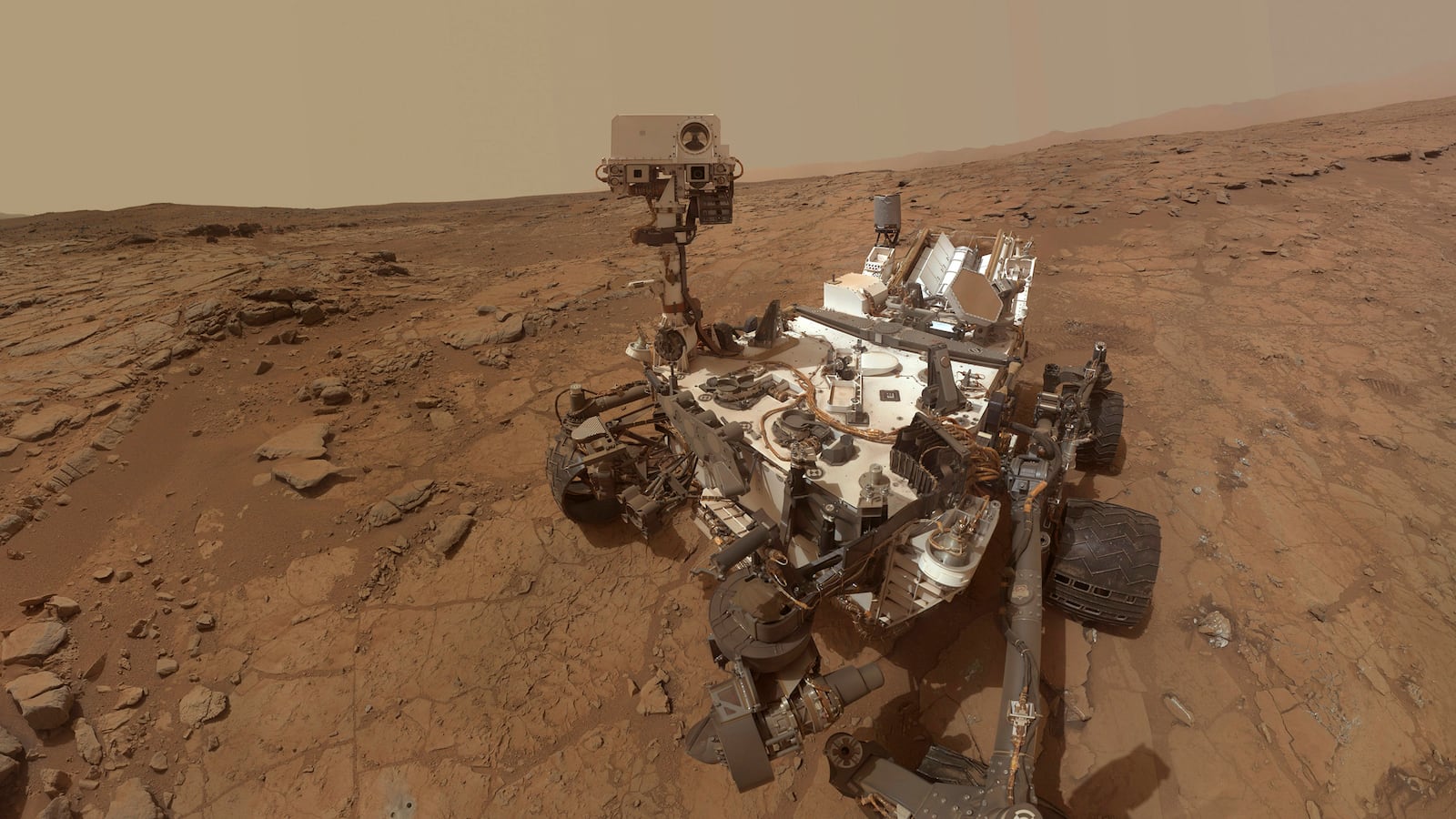Mars is not just Earth without oceans, similar as they are in many ways. If it harbors life, the red planet hasn’t been shaped in nearly the dramatic fashion Earth has. Mars has no tectonic plates—no continents, in other words—and no ginormous moon. All of these differences add up to make each planet unique, a product of happenstance and history.
And that’s why it’s important to understand each planet on its own terms. We can’t do global planetary geology at ground-level on other worlds (at least not yet), but orbiting spacecraft can do a lot for us. The latest grand accomplishment is a high-resolution global map of Mars created from optical and infrared pictures taken by Thermal Emission Imaging System (THEMIS), an instrument on the Mars Odyssey robotic probe.
The map, which was a joint project between researchers at the United States Geological Survey (USGS) and Arizona State University, was constructed from photos taken during the Martian night. While the planet is dark in optical light, it still shines faintly in infrared, with the brightness of a given patch of ground depending on what is there.
The color of a material that we see depends on the kinds of visible light it absorbs: a green shirt absorbs red and blue light, for example. A similar principle holds for infrared, but with the added benefit that the absorbed light can be given off long after the source of that light is gone. Think of an asphalt parking lot, which during summer can still be warm hours after the Sun sets. Infrared light is heat, so a material that holds onto heat for a long time will “glow” in the new map, while other materials will appear cool and dark.
That measure is known as thermal inertia, and it provides information far beyond what we can get from visible light alone. Much of the surface of Mars is covered in fine sand and dust, both of which have low thermal inertia. However, exposed rock and larger sand grains have higher thermal inertia, so they glow more brightly. The THEMIS team assembled more than 20,000 individual images to make a global mosaic; that means researchers have both a planet-scale view and—by zooming in—a highly detailed view of specific regions.
During the Martian day, thermal images show reflected light, and that’s important for showing features like mountains, valleys, and impact craters. The nighttime THEMIS maps are complementary: the mosaic of dark and bright regions tells researchers about the geological composition of a particular region—information that would be hard to obtain without landing a rover on that patch. In fact, that’s a catch-22 for Mars exploration: without knowing what the geology of that region is, it might not be advisable to land an expensive robot there.
Maps are a way to organize information, and a specific type of map is chosen for a specific purpose. Think of the difference between a satellite image and a road atlas. An aerial photo can reveal hidden features of the landscape, but would be pretty much useless for driving your car from Humptulips, Washington to What Cheer, Iowa. Similarly, the level of detail of a topographic map is great if you’re hiking or surveying, but unnecessary if you’re studying the geography of global populations or political conflict.
Maps of other worlds aren’t so different in that, though obviously the Moon has no roads and Mars has no political history. However, maps of Mars are extremely important scientifically—as well as being pleasing to look at, which isn’t so bad a thing. Geological maps in particular are useful, because we can’t land rovers (much less humans!) on every interesting patch of Martian ground to study it up close. (Technically, “geology” refers only to Earth, from the root “ge,” so I should be saying “areology” instead. However, nitpickers may bite me.)
For Mars, geological maps are essential for understanding the planet’s history and evolution. It may have once had lakes and oceans; if so, those regions are necessarily different than ground that had always been dry. Similarly, Martian volcanoes like Olympus Mons are dormant today, but geological maps may be able to show how they affected their surroundings when they were active in the past.
Thermal maps of Earth reveal a lot about the past and present, including changing conditions under climate change. While Mars has evolved more slowly, it’s not an unchanging world, and that’s the value of studying both from the ground and from space. We’ve come a long way from the earliest maps of Mars (some of which included the fringe idea that the planet was threaded with “canals”). Modern global surveys like the THEMIS mosaic are a way for us to understand an alien world.






